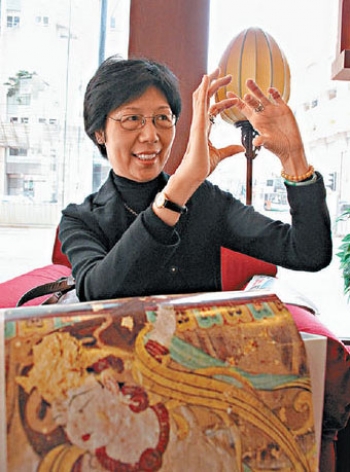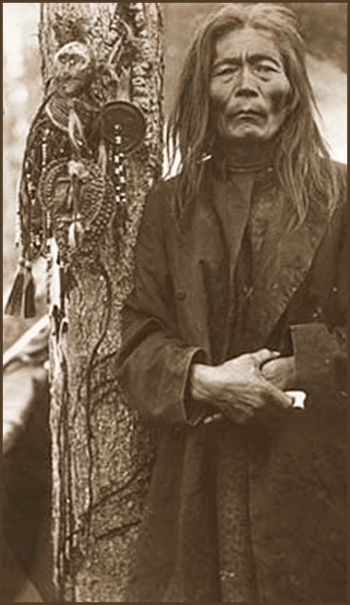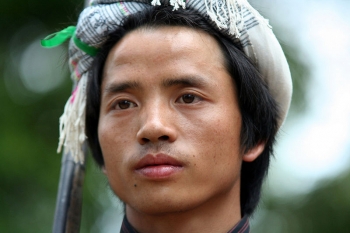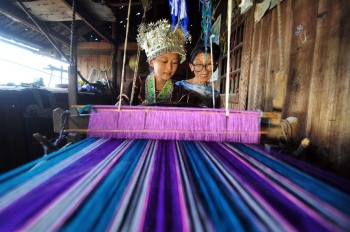In Chi Zhijian’s (遲子建) The Last Quarter of the Moon (额尔古纳河右岸), it is not inter-tribal conflict or the natural elements of snow and storm that destroy the reindeer-herding Evenki (鄂温克族). It is the relentless march of modernism. Modernism is an existential alliance of technology and ideology that liberates us from the old world while enslaving us to the new. Capitalism, collectivization, tree logging, and urbanization force most of the Evenks to abandon their forest “lifeworld” (lebenswelt), the self-evident universe that the community experiences together. Without this shared world of inheritance and memory, the Evenki tribe physically and spiritually dies. As the last Evenks leave for Han Chinese cities, their stories of reindeer, firelight by eventide, and dancing shamans fade away.
Chi is not naïve enough to suggest that the Evenks’ lives were perfect. Violence, anger, jealousy, and superstition are universal conditions, even for tribal people. Nevertheless, her atmospheric and poignant tale offers an important moral that is relevant to all minorities in China: lifeworlds are critical to a people’s survival. They demand respect and preservation.
Mrs. Lee Mei-yin, Special Researcher for Dunhuang Academy, can empathize with the loss of lifeworlds better than most. This is because she has enjoyed extensive contact with Chinese minorities since the 1990’s. She began travelling to meet them after becoming fascinated by their cultures in 1985. Two years have passed since her last trip in the spring of 2012, leading to her exhibit at Hong Kong University’s University Museum and Art Gallery –Embroidered Identities: Ornately Decorated Textiles and Accessories of Chinese Ethnic Minorities (1). After I toured the exhibit, she spoke avidly to me on many occasions about the vanishing virtues of China’s minorities, which share many common values with Buddhism. Mrs. Lee argues that these minorities possess unique value systems that could enrich our urbanized lives and that Buddhists have a rare chance to be informed and inspired by their lifeworlds.
The animism common to 8% of China’s non-Han population does not imply technological or cultural backwardness. When Russian ethnographer Anna Sirina lived with the Katanga Evenks (a different Evenki community from the reindeer herders in China), she coined the term “ecological ethic” for hunter-gatherer societies. She defined this ethic as “a system of responsibility of people to nature and her spirit masters, and of nature to people” (2). This sense of responsibility is inspired by the animist belief in “the embodiment, animation, and personification of nature”. Mrs. Lee has a simple term for this profound sense of humility: gratitude (gan en xin 感恩心). As Sirina observed, even hunters expressed appreciation to their quarry. Their reverent prayers after the chase were directed to the dead animals, begging their spirits for forgiveness. In a lifeworld where killing sentient life is unavoidable, moderation and repentance become central to spirituality and survival.
The “necessity” China’s minorities have for killing becomes a spiritual exercise. This basic sense of guilt and confession provides the foundation of all authentic spirituality, including Buddhism. At the heart of this gratitude is the awareness that the universe is alive with a pulsing, breathing higher power. For a Buddhist, gratitude is akin to faith, and faith in the Buddha is life itself.
The practices of China’s ethnic minorities enact the deepest natural instincts of humankind. Their appreciation for beauty is far removed from the artificial obsessions suffered by modern beauticians and designers. It is informed by instinctive preferences and naturally complementary pairings. Mrs. Lee put it best: “How could the Miao people (miao zu 苗族), with


















